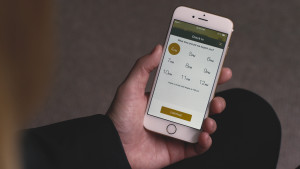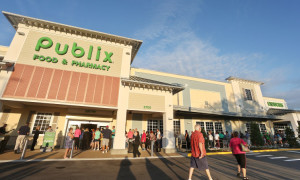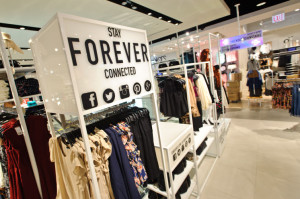At the Aloft Tampa Downtown hotel, guests can bypass the check-in desk in the lobby and go straight to their room — if they’ve downloaded the Starwood Preferred Guest app on their smartphone.
Tag Archives: Millennial
Publix among companies challenged to retain millennial workers
By Justine Griffin for the Tampa Bay Times
For years, Publix Super Markets captured accolade after accolade for being one of the best places to work in the United States.
After all, the Lakeland-based grocery chain makes a contribution to each employee’s retirement account in the form of Publix stock every year. With more than 177,000 employees in six states, nearly 10,000 have worked for the company for 20 years or more, which is significant for a company of its size. Publix keeps a running, competitive list of the top 200 employees with at least 40 years logged with the company.
But like many other companies, Publix is struggling to come up with new ways to keep the millennial generation engaged — and employed for the longer term.
“Millennials lived through the economic crisis in 2007 and beyond. They saw their parents and other family members get laid off, so their perception of loyalty is very different,” said Moez Limayem, dean of the University of South Florida’s Muma College of Business. “They expect companies to keep them engaged, and if they’re not getting that, they’ll leave.”
Read more here.
Teen apparel companies struggle to compete with low prices, fickle tastes
Young Professional Start Up
I am leading a new project at the Herald-Tribune Media Group that is geared toward attracting more young professionals to our publications. I am currently a part of a team that is designing a new publication – which is neither print or solely online – that milllennials find hopefully engaging and interesting.
We’re still in the research and development stage, but so far the project has been a lot of fun. I’ve lead small brainstorming discussions in art galleries with young people in our community and with other reporters in our newsroom. This week I’m leading a young professional panel discussion at a jobs conference in Sarasota.
Stay tuned for more to come.
Column: Millennial shoppers hard to please, impossible to ignore
My “What’s in Store” column from Aug. 5, 2013.
***
Historically, at least, Generation Y has been an age group retailers have struggled to reach.
But since they are armed with the digital prowess and market savvy of most plugged-in millennials, retail chains have been forced to find a way to reach the 21st century’s first true digital generation. Old-school print catalogs and mail-in coupons just won’t do it anymore. But that doesn’t mean they aren’t trying.
Macy’s announced this month that it will expand its line of Gen Y brands in spring, the second consecutive year the department store chain has added to offerings aimed at the teen-to-twenties age group to reach its next generation of shoppers. Among those new brands are Maison Jules and QMack, which will be available in 150 stores across the country this month.
The retailer also has honed its “Mstylelab” and “Impulse” departments as of late, which focuses on shoppers aged 13 to 22 and 19 to 30 age groups.
Like many retailers, Macy’s doesn’t want to ignore millennials, because their math is pretty compelling: There are roughly 80 million in the U.S. (including me), and collectively, we spend about $600 billion a year, according to St. Petersburg consulting firm Accenture. If projections hold, that spending will grow to $1.4 trillion annually by 2020.
But the problem for Macy’s and others is we don’t fit a mold.
Not all of us shop online. Accenture’s survey notes we still like to shop in malls and actually like to see and feel the products we buy. But nearly half engage in “showrooming,” where they go to a store to check out an item, then search online for a better price. (Most millennials expect prices in stores and online to be similar, or identical).
From the retailers’ perspective, too, there are concerns that Gen. Y shoppers lack brand loyalty. In a survey, nearly 40 percent of retail industry leaders said it’s their biggest concern about the demographic.
Read more here.



